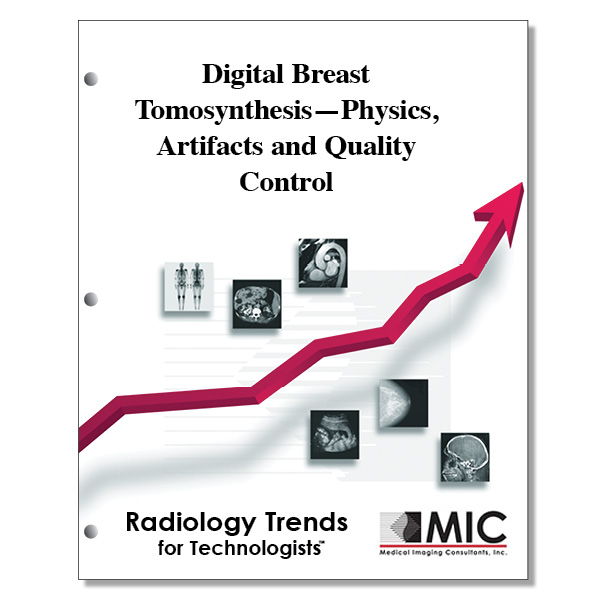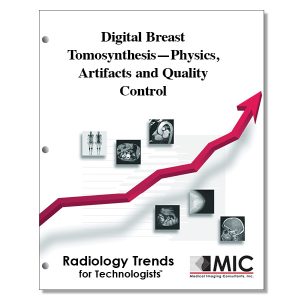

Digital Breast Tomosynthesis—Physics, Artifacts and Quality Control
Physical principles, artifacts, and quality control considerations that are unique to digital breast tomosynthesis are reviewed.
Course ID: Q00597 Category: Radiology Trends for Technologists Modality: Mammography2.25 |
Satisfaction Guarantee |
$24.00
- Targeted CE
- Outline
- Objectives
Targeted CE per ARRT’s Discipline, Category, and Subcategory classification for enrollments starting after January 27, 2023:
Mammography: 2.25
Image Production: 2.25
Image Acquisition and Quality Assurance: 2.25
Outline
- Introduction
- Physical Principles of DBT
- Tube Motion
- Sweep Angle
- Number of Projections
- Radiation Dose
- Image Reconstruction
- Artifacts
- Blurring-Ripple Artifacts
- Truncation Artifacts
- Loss of Skin and Superficial Tissue Resolution
- Motion Artifacts
- Additional DBT Artifacts
- DBT QC
- Phantom Image Quality Testing
- Evaluation of Spatial Resolution
- Testing for Volume Coverage and Geometric Accuracy
- Flat-Field Testing
- Conclusion
Objectives
Upon completion of this course, students will:
- recognize when mammography gained widespread acceptance as a screening tool
- identify advancements that were necessary for the commercialization of DBT
- recall when the first DBT system was FDA cleared
- understand how FFDM in combination with DBT compares to FFDM alone
- learn a technique to minimize radiation dose when DBT is combined with FFDM
- recall the percentage of mammography facilities in the U.S. offering DBT (in 2017)
- recognize acquisition parameters shared by FFDM and DBT and those which are DBT-specific
- understand what is meant by in-plane resolution and out-of-plane resolution
- know how much depth information is contained in FFDM images, DBT images, and CT images
- learn two different ways the x-ray tube may move during DBT
- compare the sweep angles offered on different manufacturers’ DBT systems
- recognize the benefit of a large vs. a small sweep angle
- learn the relationship between number of projections, resolution, and radiation dose
- remember the common materials used for the x-ray tube’s anode target and filter on DBT systems
- know the MQSA radiation limit per mammography view
- learn which direction on a DBT image has non-optimal resolution
- identify the conventional tomographic reconstruction algorithm
- identify an alternate tomographic reconstruction algorithm designed to improve image quality
- study what a high-pass filter does during tomographic reconstruction
- understand the orientation of reconstructed DBT images
- learn a technique to delineate microcalcification distributions when using DBT
- recall three artifacts specific to DBT
- identify the reason for blurring-ripple artifacts
- know the reconstruction algorithm used to make blurring-ripple artifacts least noticeable
- explain the reason for truncation artifacts on DBT
- identify how truncation artifacts appear on DBT
- correlate a certain type of patient with loss of skin and superficial tissue resolution
- list reasons for motion artifacts
- know anatomical locations where motion artifacts are seen
- know the necessary requirements before an imaging facility can perform DBT
- describe the purpose of quality control on DBT systems
- state how often a phantom image quality test should be performed and by whom
- identify the type of phantom used to test spatial resolution
- understand what a flat-field QC test is looking for
- know who should perform the flat-field test and how often
